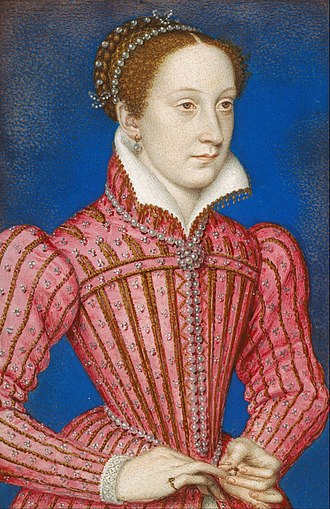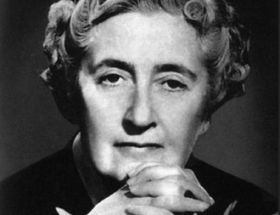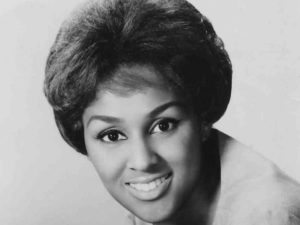
Childhood
Antonio Sacchini was born on 14 June 1730 to the humble Florentine cook Gaetano Sacchini. At the age of four, he moved with his family to Naples as part of the entourage of the infante Charles of Bourbon (later King Charles III of Spain). The young Sacchini’s talent for music caught the attention of Francesco Durante, who enrolled him in the Conservatorio di Santa Maria di Loreto at the age of ten.
There Durante and his assistant Pietrantonio Gallo taught Sacchini the basics of composition, harmony and counterpoint. Sacchini also became a skilled violinist under the tuition of Nicola Fiorenza as well as studying singing under Gennaro Manna.
Sacchini was one of the favourite pupils of Durante, a hard teacher to please. It was said that Durante would point out the young Sacchini to his fellow pupils, warning them that he would be a difficult rival to beat and urging them to try to match him, otherwise Sacchini would become the “man of the century.”
Early Career
Sacchini was 25 when Durante died in 1755. The following year, he became a “mastricello” (a junior teacher in the school) and had the opportunity to compose, as the final exercise of his studies, his first operatic work, an intermezzo in two parts entitled Fra’ Donato. It was performed to great acclaim by the school’s students and was followed a year later by another intermezzo, Il giocatore.
The warm reception these works enjoyed paved Sacchini’s way to commissions from the smaller theatres which performed opera in Neapolitan dialect. One of his major successes was the opera buffa Olimpia tradita (1758) at the Teatro dei Fiorentini, which led to commissions from the Teatro San Carlo, where his first opera seria, Andromaca, was premiered in 1761.
Meanwhile, Sacchini was pursuing his career at the Conservatorio, where he had initially taken up the unpaid position of “maestro di cappella straordinario”, assisting the “primo maestro”, Manna, and the “secondo maestro”, Gallo. When Manna retired in 1761, shortly before the premiere of Andromaca, Sacchini was promoted to “secondo maestro”.
In 1762 the Conservatorio gave Sacchini permission to travel to Venice to present the operas Alessandro Severo (with a libretto by Apostolo Zeno) at the Teatro San Benedetto, and Alessandro nelle Indie (with a libretto by Metastasio) the following year at the Teatro San Salvatore. Over the next couple of years, Sacchini produced new operas for theatres across Italy: Olimpiade in Padua (Teatro Nuovo, 1763), Eumene in Florence (La Pergola, 1764), Semiramide riconosciuta in Rome (Teatro Argentina, 1764), and Lucio Vero in Naples (Teatro San Carlo, 1764).
Success on an Italian-wide level encouraged Sacchini to leave his job at the Conservatorio di Santa Maria di Loreto, as well as his temporary post in Venice, and to try his luck as an independent composer.
Initially settling in Rome, Sacchini spent several years composing opere buffe for the Teatro Valle. These works made him famous throughout Europe. One of the most notable of them was the two-act intermezzo La contadina in corte (1765). In 1768, Sacchini moved to Venice, having accepted the temporary post of director of the Conservatorio dell’Ospedale dei Poveri Derelitti, offered by his predecessor in the job Tommaso Traetta, who had been Sacchini’s friend since their studies together in Naples.
In Venice, Sacchini soon made a name for himself as a singing master (his pupils included Nancy Storace and, possibly, Adriana Gabrielli, who, under the name Adriana Ferrarese del Bene was the first singer to play Mozart’s Fiordiligi). While continuing to pursue his career as an opera composer, he also spent time writing sacred pieces (oratorios, masses, hymns, motets) for the Conservatorio and various Venetian churches, as his contract required.
Career in London
In 1772, Sacchini moved to London, accompanied by Giuseppe Millico, one of the finest castrati then active on the European stage. Beginning with two new operas staged at the King’s Theatre in 1773, Il Cid (in January) and Tamerlano (in May), Sacchini soon “captured the hearts” of the London public. He was so popular that Tommaso Traetta was unable to make any impression with his operas when he arrived in the British capital in 1776, even though Sacchini himself had supported the move by his old friend.
Sacchini remained in London for a decade, until 1782, despite the fact his enormous mounting debts created growing difficulties and even enemies. Among the latter was Venanzio Rauzzini, who had taken over from Millico as the leading male singer at the King’s Theatre and who claimed that he had written some of Sacchini’s most famous arias himself.
The majority of Sacchini’s chamber music dates from his years in London. As far as music for the stage is concerned, new operas by Sacchini were produced every year over the whole period apart from 1776/1777probably in connection with the composer’s trips to the Continent and with the staging in Paris of French-language pasticci based on two previous works: the dramma giocoso from the Roman period, L’isola d’amore, now entitled La colonie, and the opera seria L’Olimpiade, which became L’Olympiade. The translator of the libretti into French was the musician and writer Nicolas-Étienne Framery, a lover of Italian music.
At that time, the Parisian operatic scene was divided between supporters of the German composer Gluck, famous for his musical reforms, and followers of his Italian rival Niccolò Piccinni.
On 8 June 1779, a work by Sacchini appeared for the first time on the stage of the Paris Opéra. It was a revival of the dramma giocoso L’amore soldato, which had premiered in England the previous year and was now advertised as an intermède in three acts.
During his stays in Paris in the seventies Sacchini is also said to have imparted the rudiments of a real singing education to the future European star of opera and refined cantatrice, Brigida Banti.
Career in Paris
Sacchini’s position in London eventually became untenable: his health had declined and his work was no longer attracting the same success. These factors and the looming threat of debtors’ prison finally induced him to accept Framery’s invitation to move to Paris in 1781.
Sacchini received a warm welcome in the French capital: the Piccinnists saw him as a natural ally in their battle against the influence of Gluck, but more importantly, Emperor Joseph II happened to be in Paris at the time, travelling incognito. The emperor was a passionate devotee of Italian music, and Sacchini’s in particular and he eagerly recommended the composer to his sister Marie Antoinette, Queen of France.
The Queen’s patronage paved Sacchini’s way to the Opéra. In October, Sacchini signed a lucrative contract with the Académie Royale de Musique (the Paris Opéra) to produce three new works.
However, Sacchini immediately found himself embroiled in intrigues. Seigneur de la Ferté, the intendant of the Menus-Plaisirs du Roi, was opposed to the queen’s predilection for foreign music. He plotted to delay the premiere of Sacchini’s first French opera, Renaud. Meanwhile, the Gluckists were manoeuvring to detach Sacchini from his Piccinnist supporters.
When Renaud finally appeared on 25 February 1783, its reception was positive but not overwhelming. The libretto was a reworking, to which Framery contributed, of a libretto by Simon-Joseph Pellegrin, which had originally been set to music in 1722 by Henri Desmarets.
Contrary to what has often been claimed, the Parisian Renaud was not a revised version of Sacchini’s Armida of 1772. Instead, Renaud was “a completely new opera, starting with the action, which begins at the point where the other two leave off; the subject of the opera was no longer the love of Armida and Rinaldo in the enchanted garden, which Armida destroys after her lover leaves her, but based on their subsequent story in Tasso‘s Gerusalemme liberata.”
However, Renaud pleased neither party: “Piccinni’s faction asserted that the score … was influenced by Gluck, while the Gluck supporters condemned the work for lacking dramatic power and originality.”
Sacchini’s second opera for the Paris stage was also based on a subject the composer had treated before, the story of El Cid. The new work appeared at the court theatre under the title Chimène in November 1783, in an atmosphere of direct competition with Piccinni.
Piccinni’s Didon, staged at court the previous month, had been hailed as a masterpiece, enjoying a further two performances there. In comparison, Chimène made less of an impression and was only given once.
However, “both composers were presented to the king (Sacchini by the queen herself) and given a large pension”. Despite Sacchini’s arrival in Paris having been supported by Piccinni himself, the continuing absence of Gluck (which would turn out to be permanent), the intrigues of Piccinni’s enemies, Sacchini’s touchiness and need for money, had inevitably ended in a rivalry between the two Italian composers.
All these reasons contributed to the emergence of a third musical faction on the Parisian scene: the “Sacchinists”, a “sort of moderate Gluckists, who had adhered to the new sect solely because of their jealousy towards Piccinni. With his indecisiveness and weakness, Sacchini only succeeded in setting himself against both factions, without endearing himself to either; and when it came to a fight, he found both of them against him.”
Sacchini’s first two Parisian operas had been praised for their Italianate charm, but criticised for a certain dramatic weakness also deriving from the Italian style. With his next operas, Sacchini “attempted to create works that conformed to the ideals of French musical drama.”
Dardanus, with a libretto which was largely a reworking of Jean-Philippe Rameau’s opera of the same name, provoked mixed reactions and appeared in two different versions in the first year of its life on stage.
His next opera, Œdipe à Colone, was to have a far more dramatic impact on the life of the composer. Sacchini had finished the score in November 1785 and the enthusiastic Marie-Antoinette was keen for it to be given at court on 4 January 1786 to mark the opening of the new theatre at the Palace of Versailles.
Perhaps because of difficulties with rehearsals, the one and only performance at court had limited success, but fate denied the composer the satisfaction of seeing it again, either at court, or at the Opéra.
Death
Sacchini died on 6 October 1786, aged 56, leaving the score of Arvire et Évélina incomplete. It was finished by Jean-Baptiste Rey, the head of the Opéra and successfully produced on 29 April 1788.
Sacchini’s dramatic death caught the public’s imagination. The involvement of the queen and a sincerely appreciative article by Piccinni, who dedicated a moving funeral oration to the dead composer, turned popular opinion in his favour. The management of the Académie Royale, without even waiting for the usual pressure from above, ordered Œdipe à Colone to go into rehearsal at the Théâtre de la Porte Saint-Martin.
“The first performance of Œdipe à Colone took place on Tuesday 1 February 1787 … The hall was packed, and many people had to remain standing … The turnout made the triumph even more impressive.”
Its success was resounding and lasting. The work was staged in Paris’s leading theatre every year from 1787 to 1830 and revived in July 1843 and May 1844 (giving a total of 583 performances), making it Sacchini’s most famous opera and one of the most durable of the eighteenth-century repertoire, until it fell into the oblivion in which it has more or less remained until today, along with the rest of Sacchini’s work.


